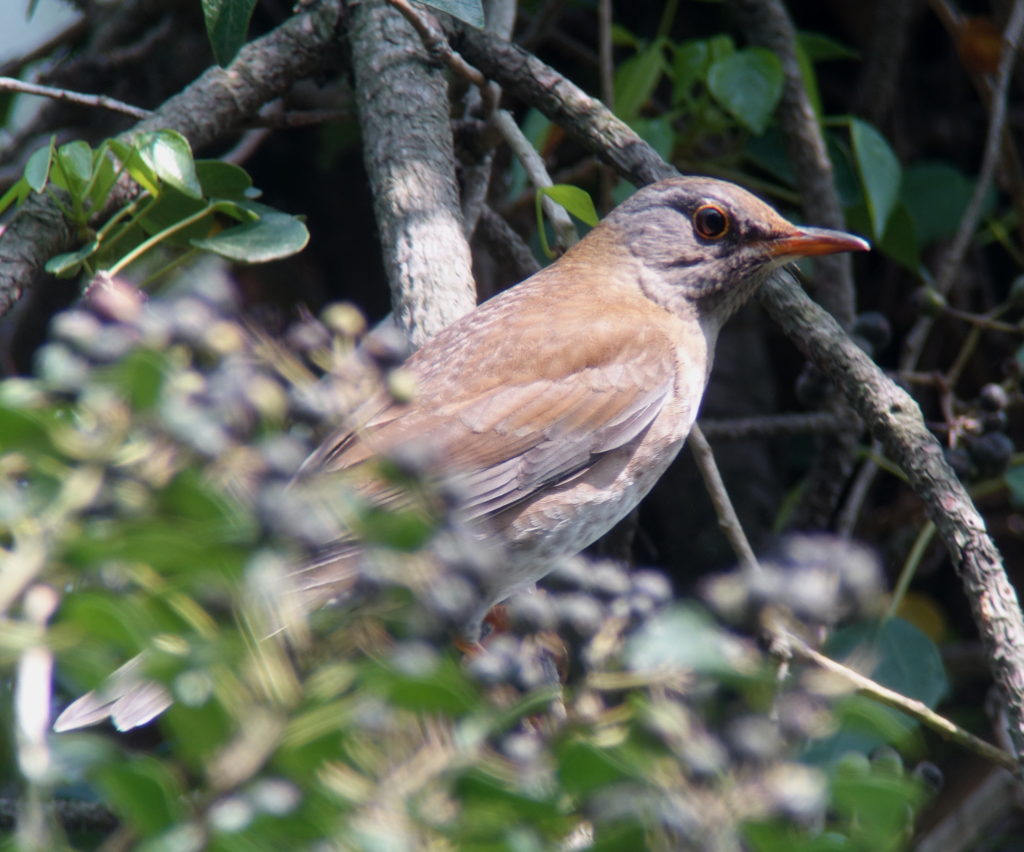Bird News from Nial Moores
Four more visits to the local park with highlights including singing Sakhalin Leaf (on 17th and 18th) and Pale-legged Leaf Warblers (on 18th); a remarkably early adult male Mugimaki Flycatcher (on 17th); and plenty of thrushes.
In order to improve understanding of migration timing, I spent 5-7 hours in the local park on 11th (following overnight rain); on 13th in warm sunshine (with a max of 18c) and southwesterly winds; on 17th (after very heavy rain); and on 18th (with warm sunshine yielding to a cold dust-laden wind in the afternoon).
Species of note included:
Streaked Shearwater. A line of birds were seen moving south on the 17th
Grey-faced Buzzard. One or two on the 18th.
Pacific Swift. Six on 13th increasing to 65 on the 17th.
Ashy Minivet. Seven or eight on the 18th were the personal first of the spring.
Japanese Waxwing. At least 1-3 were present each visit.
Yellow-bellied Tit. Twenty seven on the 11th; perhaps 1-2 on the 13th; and zero on both 17th and 18th. It is fascinating to think where all these birds might be spending the summer…

 Yellow-bellied Tits Pardaliparus venustulus © Nial Moores
Yellow-bellied Tits Pardaliparus venustulus © Nial Moores
Japanese Bush Warbler. The highest count was three on the 18th.
Yellow-browed Warbler. One on the 17th was the personal first of the spring.
Pale-legged Leaf Warbler. At least four heard singing on the 18th (with an additional four Sakhalin/Pale-legged heard calling) were the personal first of the spring.
Sakhalin Leaf Warbler. At least three heard singing on the 17th and one heard singing on the 18th were the personal first of the year.
Eurasian Wren. Several during each visit, with one in song on the 13th.
 Eurasian Wren Troglodytes troglodytes dauricus © Nial Moores
Eurasian Wren Troglodytes troglodytes dauricus © Nial Moores
Grey-backed Thrush. One on the 11th; two on the 13th; 5+ on the 17th; and at least three on the 18th.

 Grey-backed Thrushes Turdus hortulorum (Female above, male below) © Nial Moores
Grey-backed Thrushes Turdus hortulorum (Female above, male below) © Nial Moores
Grey Thrush. Two on the 11th; 1-2 on the 13th; 3+ on the 17th; and 6+ on the 18th. Apparently one also seen here by Marco della Seta on the 15th.
 Grey Thrush Turdus cardis (Second Calendar-year male) © Nial Moores
Grey Thrush Turdus cardis (Second Calendar-year male) © Nial Moores
Pale Thrush. Between 20 and 60 each visit, with the highest count on the 17th.
 Pale Thrush Turdus pallidus © Nial Moores
Pale Thrush Turdus pallidus © Nial Moores
Brown-headed Thrush. Three on the 18th was the highest count.
 Brown-headed Thrush Turdus chrysolaus © Nial Moores
Brown-headed Thrush Turdus chrysolaus © Nial Moores
Blue-and-white Flycatcher. Seen each visit, with the highest count nine on the 17th.
 Blue-and-white Flycatcher Cyanoptila cyanomelana © Nial Moores
Blue-and-white Flycatcher Cyanoptila cyanomelana © Nial Moores
Narcissus Flycatcher. Surprisingly scarce with one on the 17th and 3+ on the 18th.
Mugimaki Flycatcher. An adult male was seen well on the 17th. In 2010, the earliest one seen during research into migration phenology on Socheong Island was May 8th.
Daurian Redstart. A pair were feeding young in a hole in a concrete wall on the 11th. By the 18th, these birds had fledged and in addition to giving begging calls were also giving a clicking type note – a squeaky version of an adult type vocalization.
 Daurian Redstart Phoenicurus auroreus © Nial Moores
Daurian Redstart Phoenicurus auroreus © Nial Moores
Siberian Accentor? An accentor call was heard on 17th: this is a remarkably late date for Siberian Accentor (especially in the southeast).
All images taken with a compact sony camera through a truly superb Swarovski scope…

